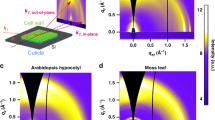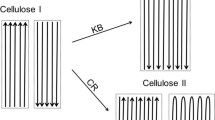Abstract
MAY I amplify and comment upon Mr. Garnett's letter in NATURE of January 10, page 51? I have often been impressed, more particularly during the last few months in collecting material for a small book on cellulose ester solutions, with the want of precision shown by physicists in defining the material used in experiments on nitrocellulose and its technical derivatives. Two eminent examples will suffice. My friend Prof. Coker entitled a most important paper, which he published in collaboration with Mr. Chakko, “The Stress-Strain Properties of Nitrocellulose and the Law of its Optical Behaviour,” whereas the material on which his experiments were carried out was xylonite or celluloid containing at least a fifth of its weight of camphor and rather more than that proportion of camphor by volume (Phil. Trans., A, vol. 221, pp. 139-162). Another old friend and teacher, Prof. Filon, in a paper which he and Mr. Jessop published on the stress-optical effect in transparent solids strained beyond the elastic limit (Phil. Trans., A, vol. 223, pp. 89-125), after deducing the existence in xylonite of a mixture of two materials with different elastic and plastic properties (page 112), speaks in his summary (paragraph (2), page 123) of “nitrocellulose under simple tension.” The distinction between xylonite and nitrocellulose in this relation is really important, as it is probable that the elastic and stress-optical properties of nitrocellulose alone would be markedly different from those of xylonite.
This is a preview of subscription content, access via your institution
Access options
Subscribe to this journal
Receive 51 print issues and online access
$199.00 per year
only $3.90 per issue
Buy this article
- Purchase on Springer Link
- Instant access to full article PDF
Prices may be subject to local taxes which are calculated during checkout
Similar content being viewed by others
Author information
Authors and Affiliations
Rights and permissions
About this article
Cite this article
SPROXTON, F. Molecular Dimensions of Celluloid. Nature 115, 158–159 (1925). https://doi.org/10.1038/115158b0
Issue Date:
DOI: https://doi.org/10.1038/115158b0
Comments
By submitting a comment you agree to abide by our Terms and Community Guidelines. If you find something abusive or that does not comply with our terms or guidelines please flag it as inappropriate.



